THE LINK to #urbanana:
Bauhaus in Krefeld, 1/2 – Sharp edges
in English / Perlen der Provinz: 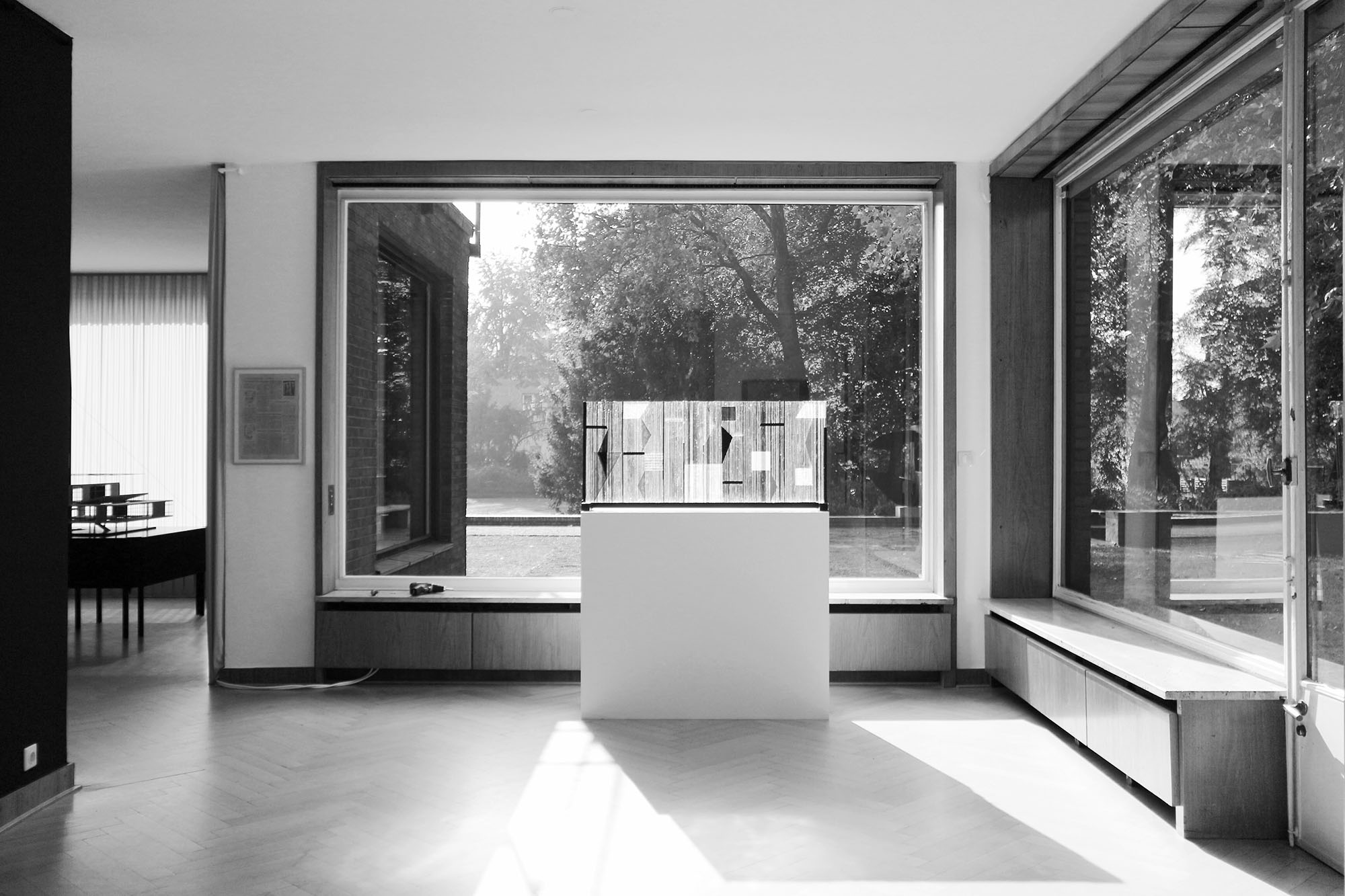
The silk weaving mill has a long tradition in Krefeld. By the 18th century, "Old Fritz" (Frederick the Great) was already supporting local craftsmanship by creating a monopoly. The city blossomed into one of the most significant locations of the German textile industry. Velvet, silk and silk brocade brought considerable prosperity to the city. Emperors, kings and the Catholic clergy all purchased their treasures in Krefeld. At first, all the operations took place in homes. Some of the typical weaving houses have endured through time and are now protected as historical monuments. Krefeld’s decline began in the 19th century, and especially the larger family businesses merged together. On 8 June 1920, VerSeidAG (United Silk Weavers) came into being, combining the businesses of the Esters, Lange, Kniffler and Oetker families; the company still exists today. Their products range from woven architectural materials, to functional textiles for safety- and protective clothing, to advertising displays and truck tarpaulins.
In the 1920s, the economy of the area briefly regained momentum. Silk products were in demand again. The art-minded director of VerSeidAG, Hermann Lange, was a member of the German Association of Craftsmen and enthusiastic about the “Neues Bauen” (“New Objectivity or "New Sobriety movement”). In 1927, he and his partner Josef Esters engaged the future Bauhaus director Ludwig Mies van der Rohe to build their residences. In the 1930s, further company buildings for VerSeidAG were built. They had Mies design even their trade show exhibitions. In the context of a fashion show, Mies designed the café "Samt und Seide" ("Velvet and Silk") together with his then-partner, the exceptional designer Lilly Reich. Sadly, his pioneering design for the Krefeld Golf Club (1931) was never executed. The free layout was strongly reminiscent of the German exhibition pavilion for the 1929 World’s Fair, the world-renowned Barcelona Pavilion. In the context of the art event Mies 1:1 in 2013, the club house was installed according to the original plans at the originally intended site at the edge of Krefeld, under the leadership of the Belgian architecture office Robbrecht en Daem, as a walk-in architecture model on a scale of 1:1.
»Less is more.«
Ludwig Mies van der Rohe, architect
Both neighbouring directors' villas, in Krefeld’s Wilhelmshofallee, create one of the central ensembles "Neues Bauen". They constitute a middle ground between Mies’s rational, geometric residences of the Weissenhof Estate in Stuttgart and the fluid room arrangement of the Barcelona Pavilion. Gently set back, they seem closed off from the street, practically inconspicuous. He constructed the two-story houses with masonry and steel supports; the facades were clad with dark red brick.
Conversely, the stepped cubes open up onto the garden with large glass windows, in a grandiose gesture towards the south and west. The artful fusion of architecture and nature was especially important for Mies. The extent to which he also co-designed the park-like garden (with wide areas of lawn, straight paths and old tree stands) is not clearly documented, but it is very probable that he had a hand in their creation. Just like the buildings, the villa gardens follow geometric principles and a calm design vocabulary. Whether supporting walls, raised beds or different kinds of ground levels, everything is clear and angular here, even the precise views from the windows into the garden, the sight lines from the terrace, the perspective onto the zoned site. The spatial flow between interior and exterior is strengthened by the undivided glass panels and subtle window frames. A real sensation! In Haus Lange, panes equipped with steel frames, which are hung on chains, can be lowered into the cellar to create a low sill height.
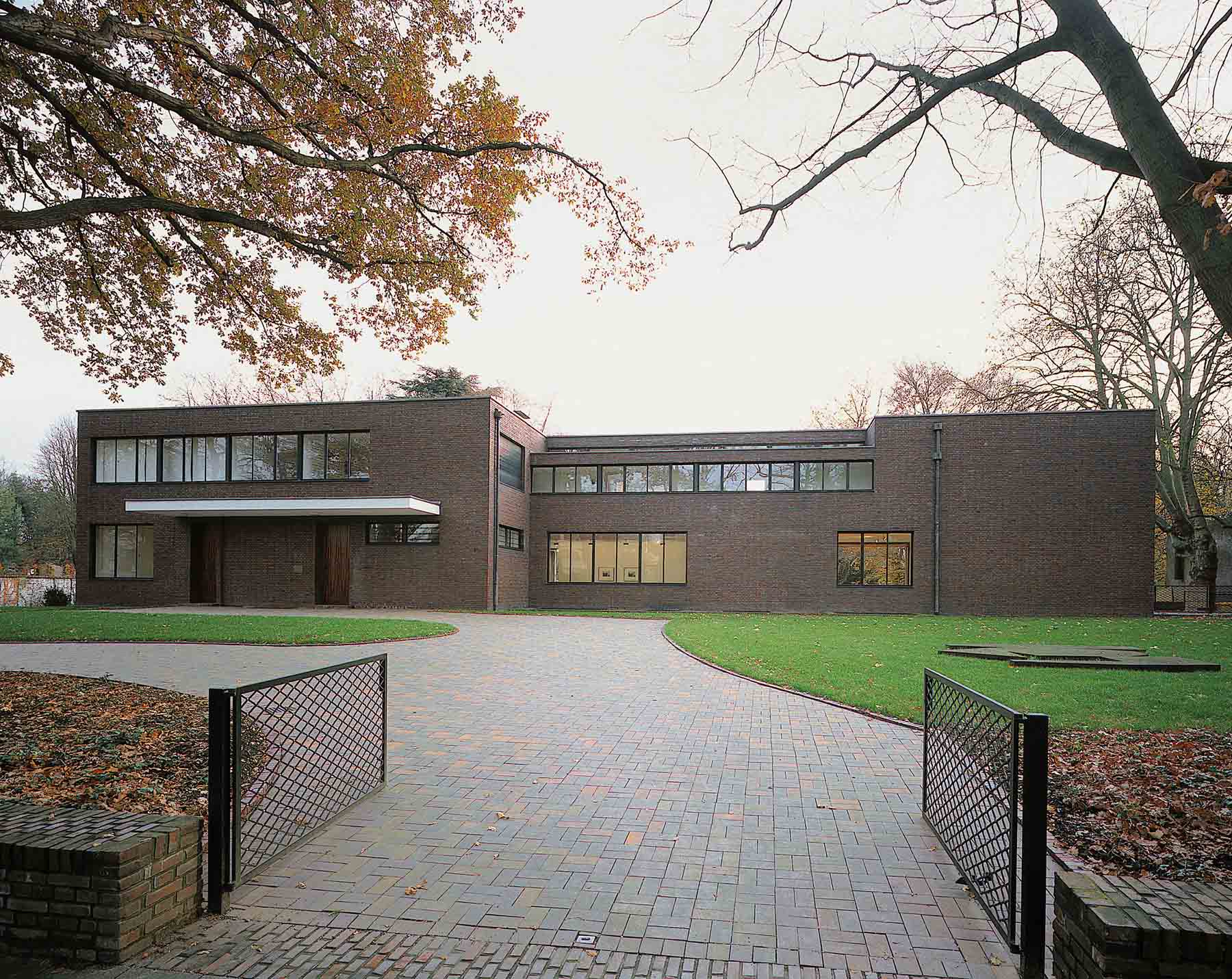
Haus Lange
Both neighbouring directors' villas, in Krefeld’s Wilhelmshofallee ...
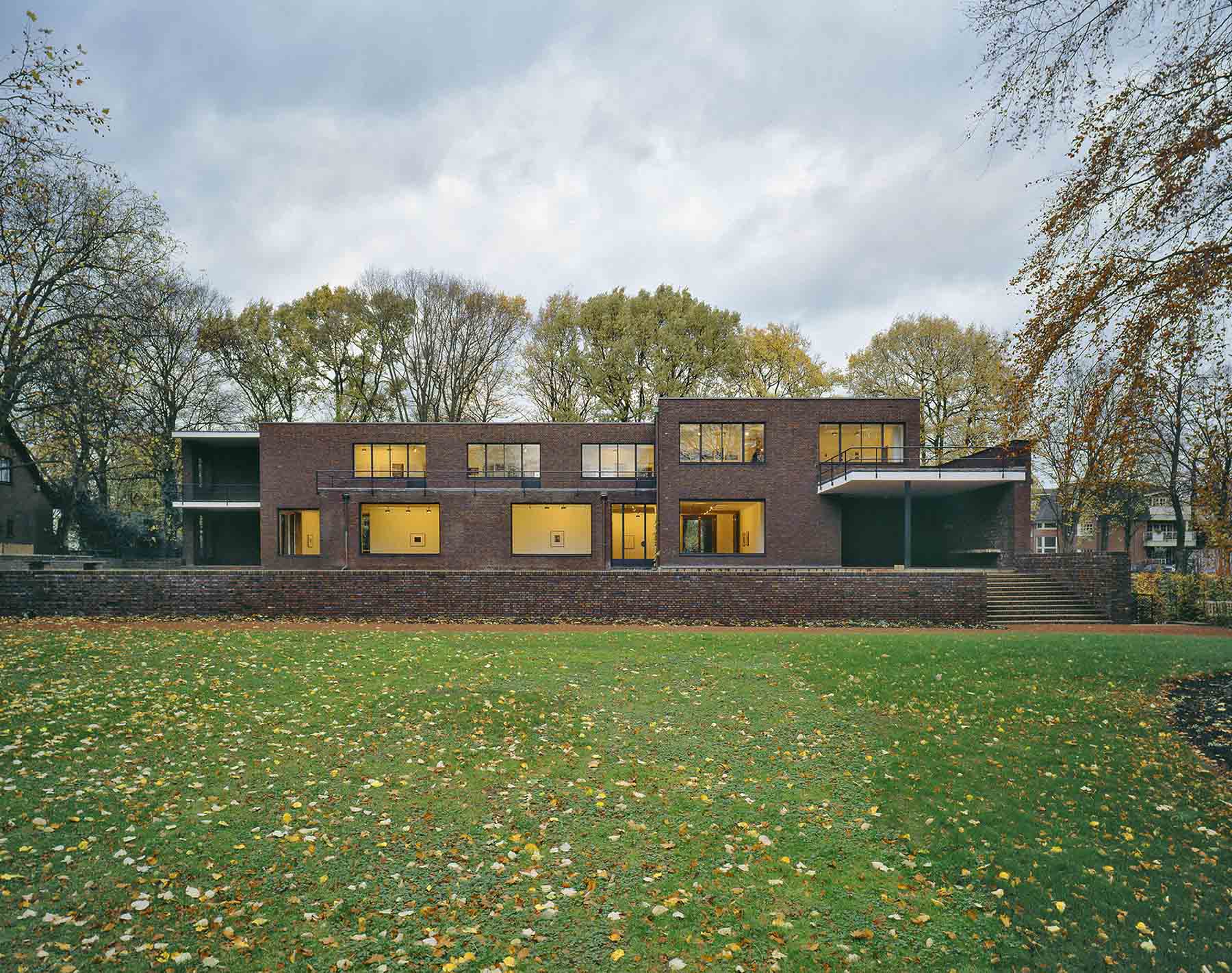
Haus Lange
... create one of the central ensembles "Neues Bauen"
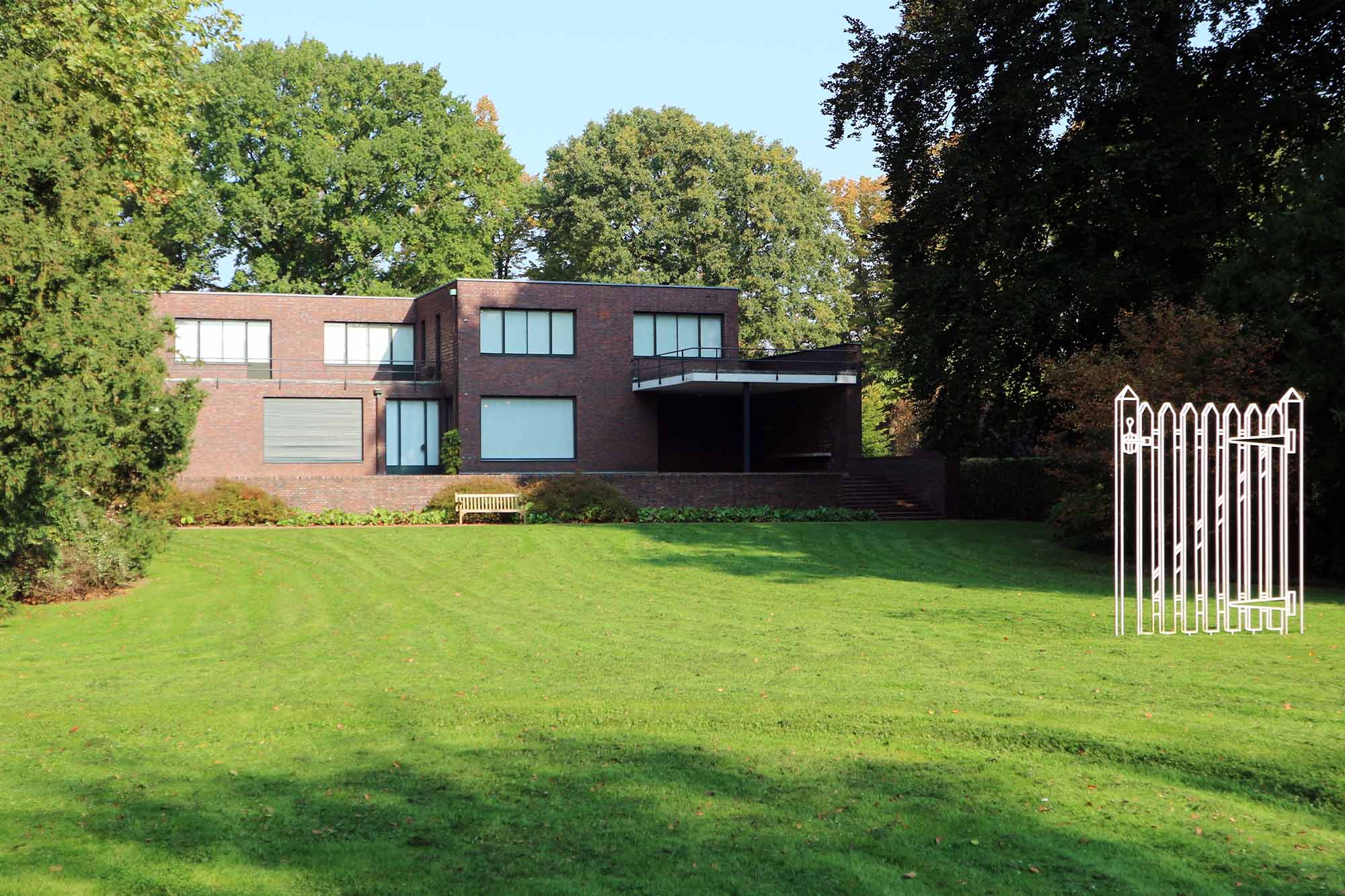
Haus Lange
Both villas were built according to the plans of Mies van der Rohe between 1927–1930.
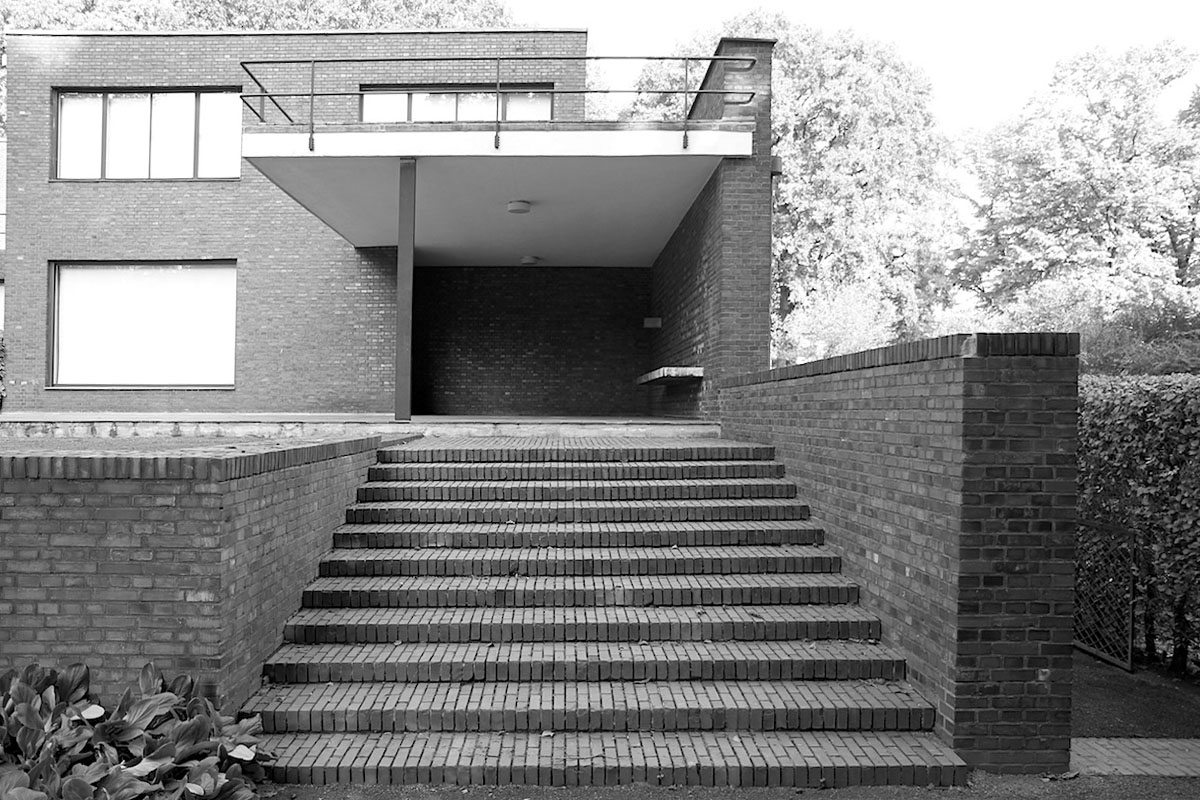
Haus Lange
Two-story houses with masonry and steel supports
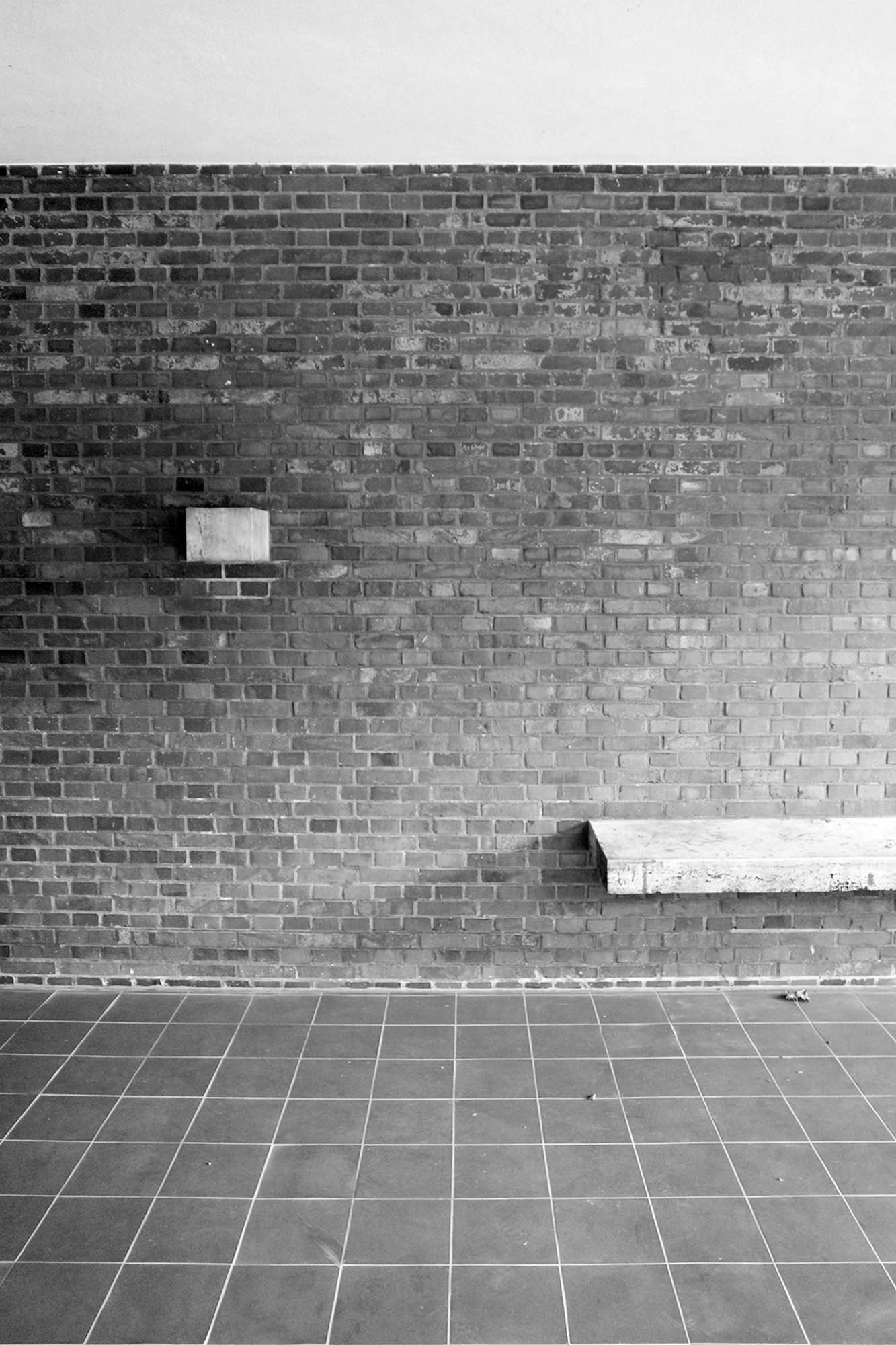
Haus Lange
Facades clad with dark red brick
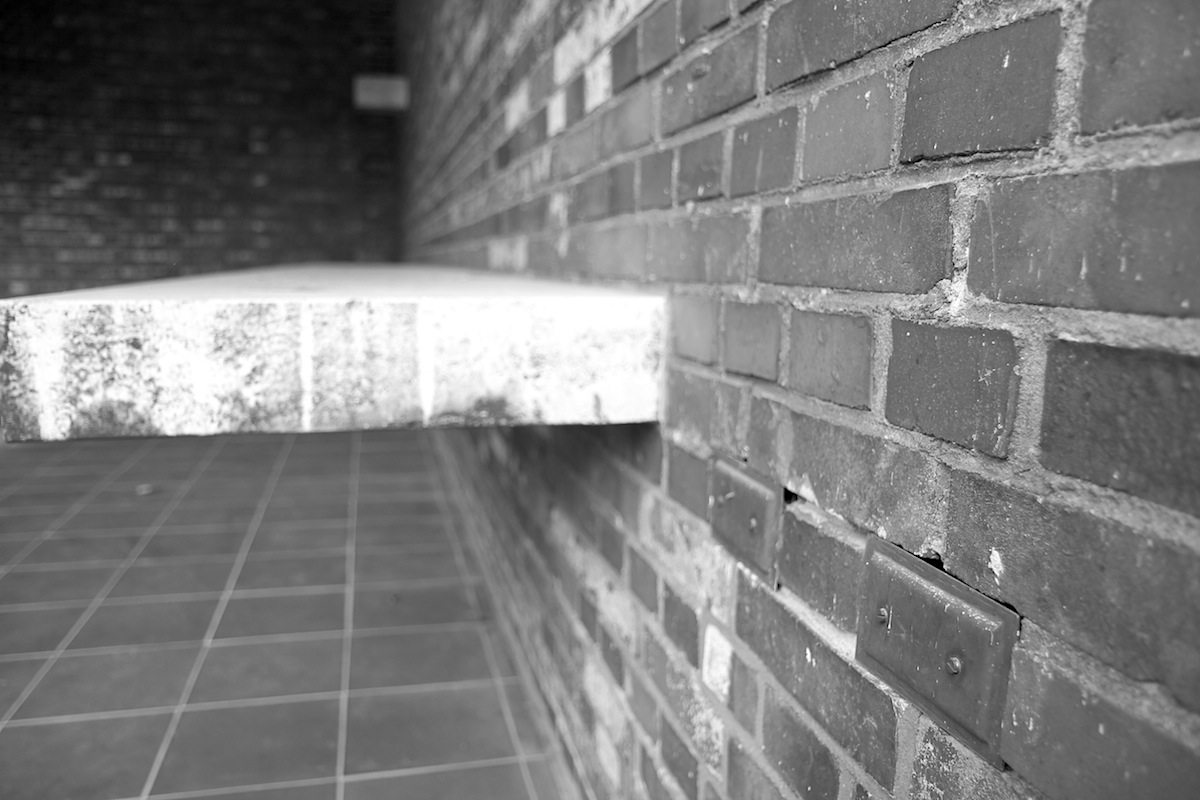
Haus Lange
Geometric principles
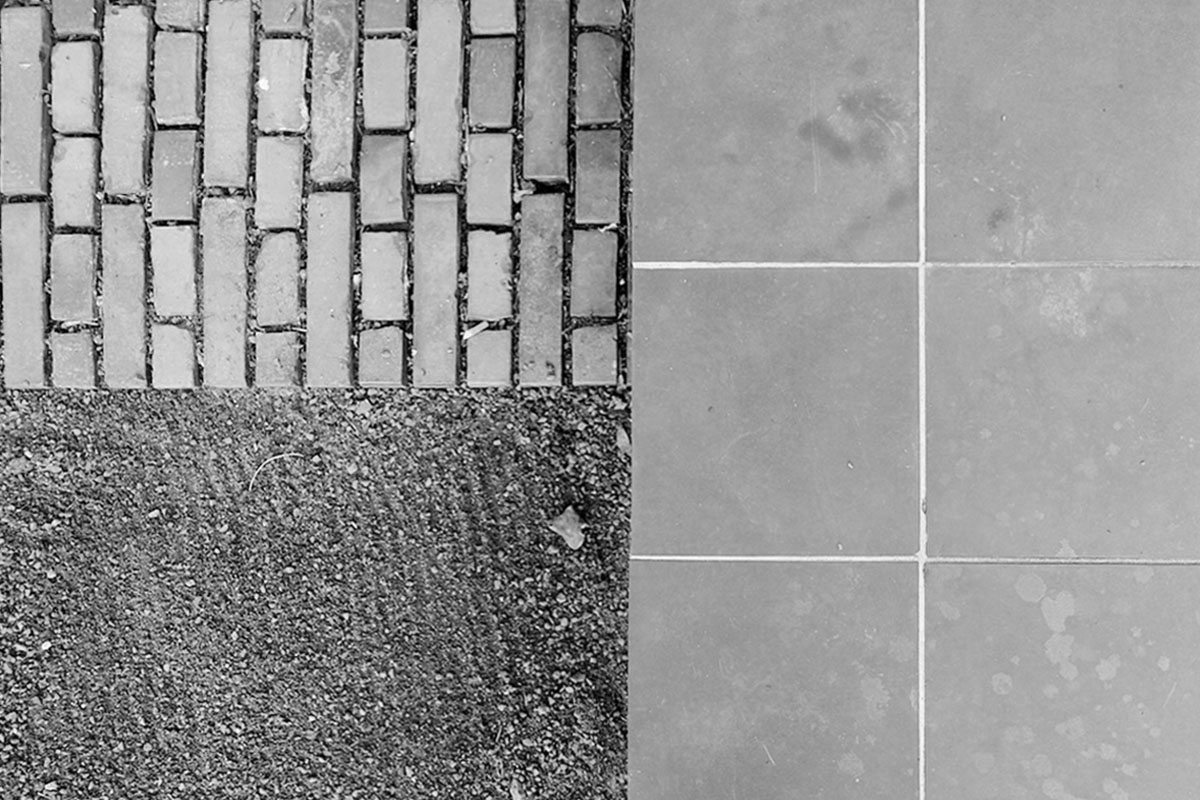
Haus Lange
Artful fusion of architecture and nature
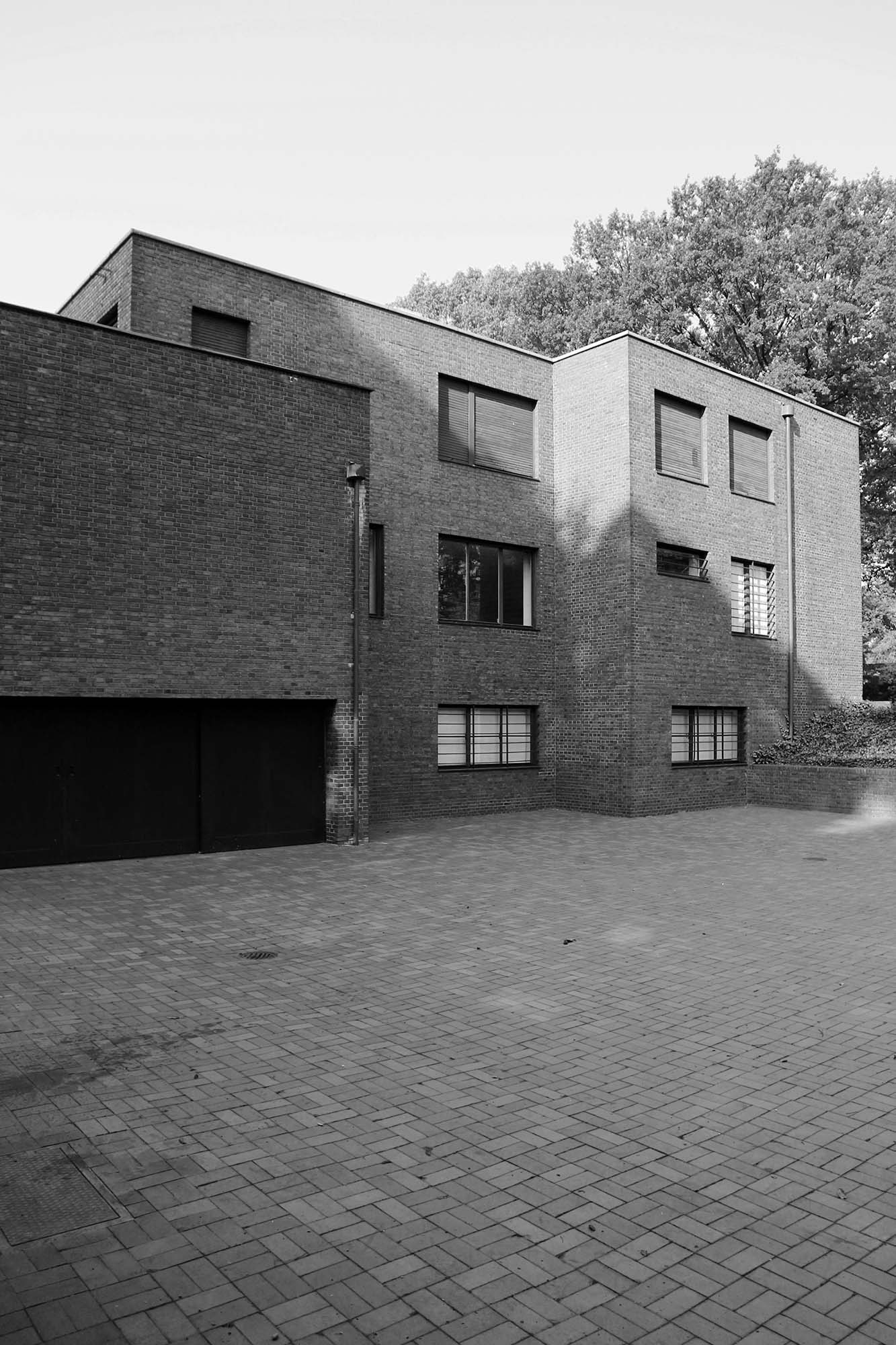
Haus Lange
Calm design vocabulary
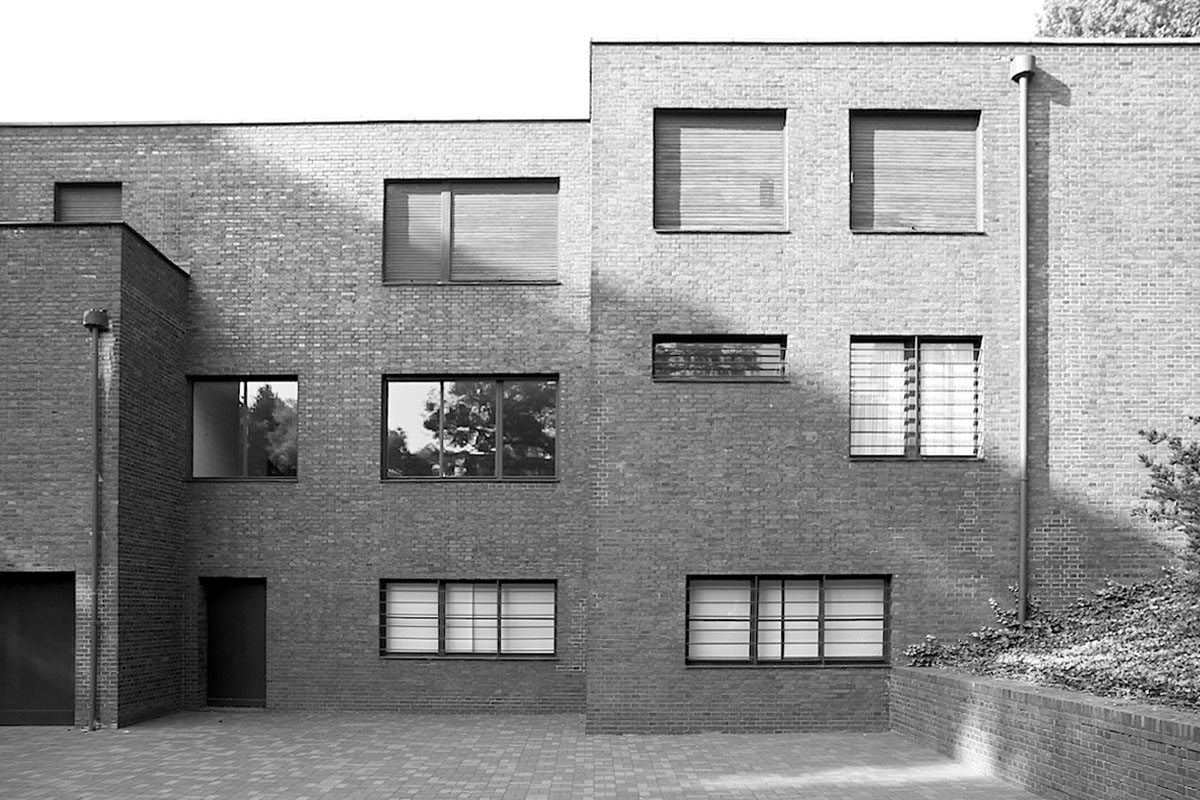
Haus Lange
The spatial flow between interior and exterior ...
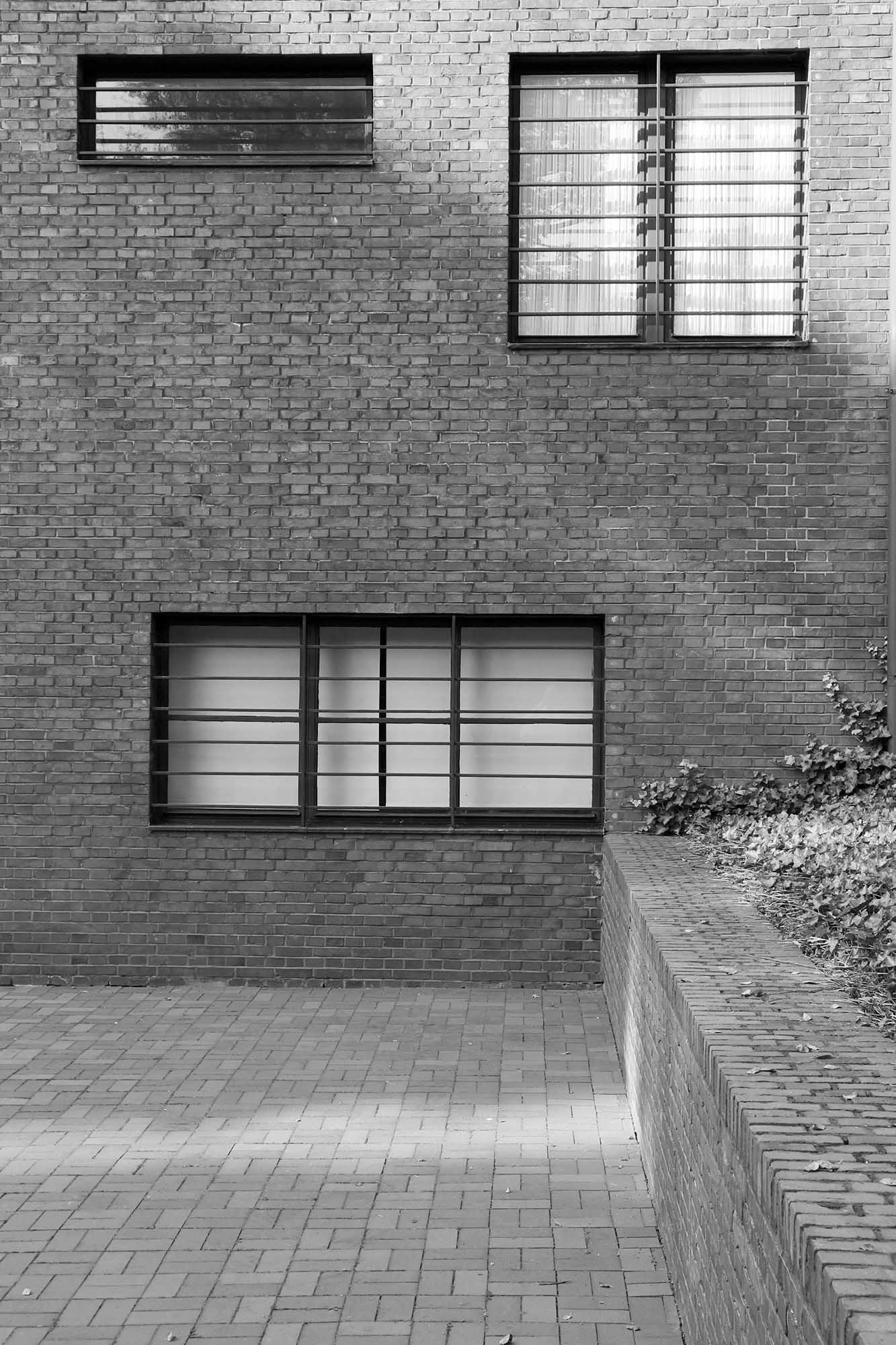
Haus Lange
... is strengthened by the undivided glass panels and subtle window frames.
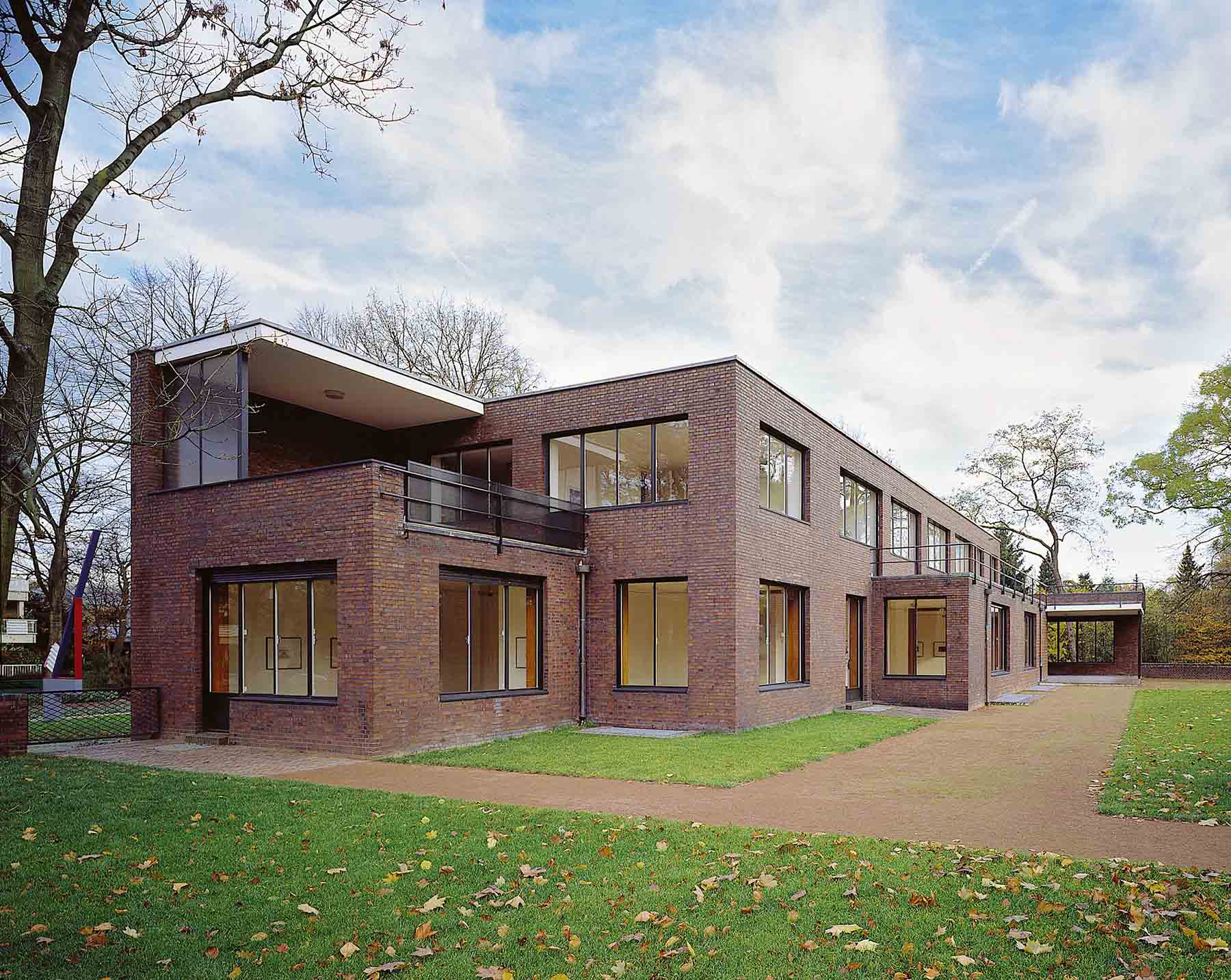
Haus Esters
In 1955 Haus Lange, followed in 1981 by Haus Esters ...
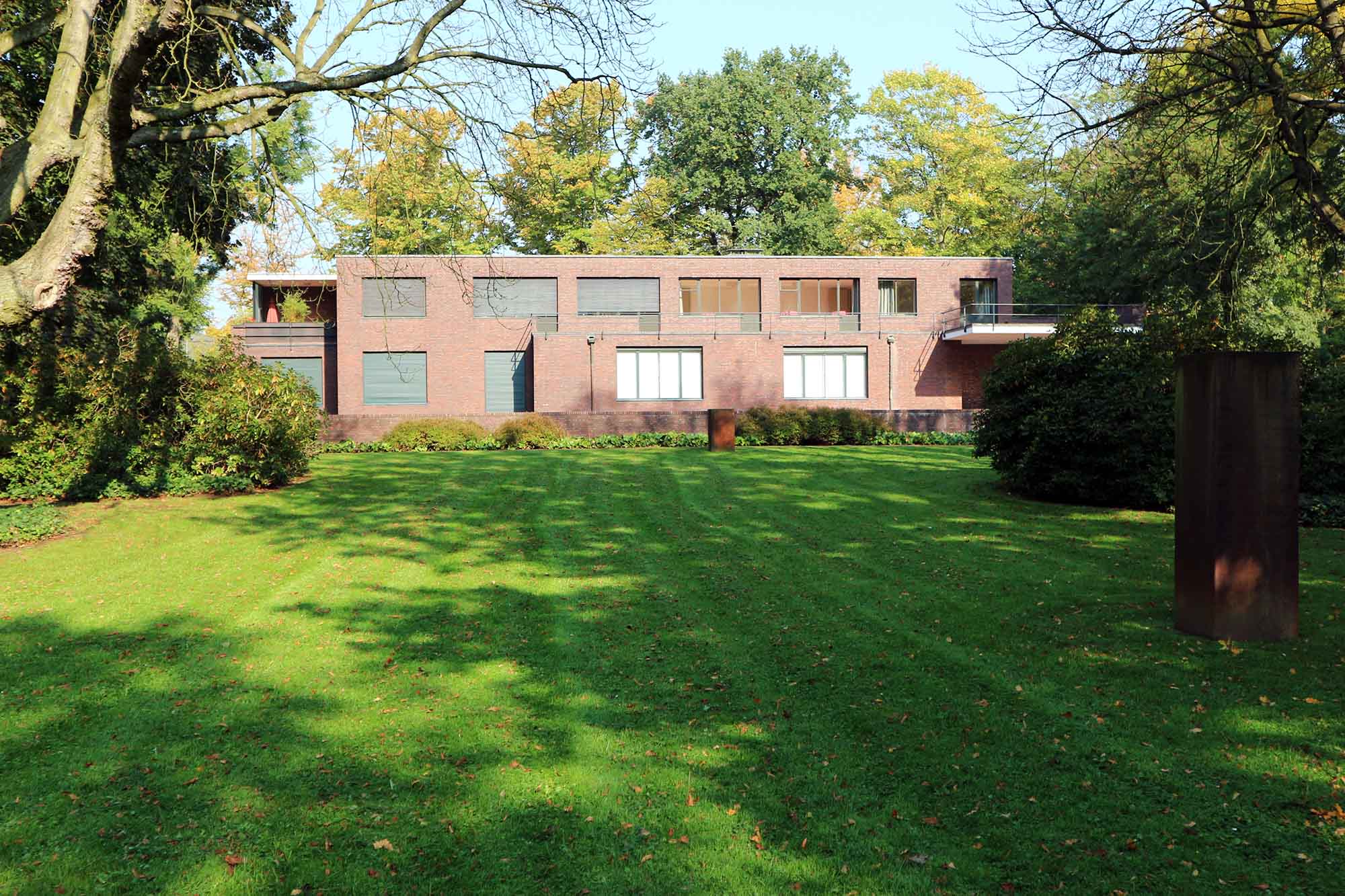
Haus Esters
... started to be used by the Kunstmuseen Krefeld as a contemporary art space.
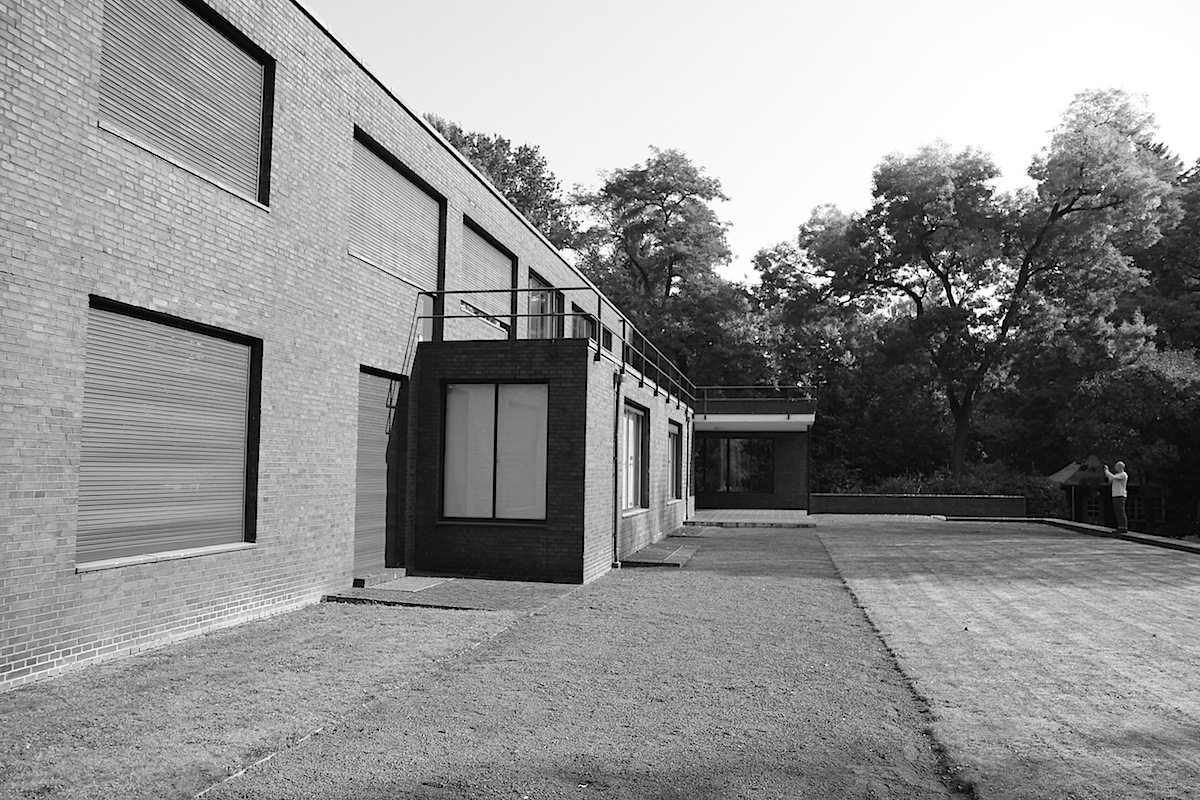
Haus Esters
The museums Haus Lange and Haus Esters are open ...
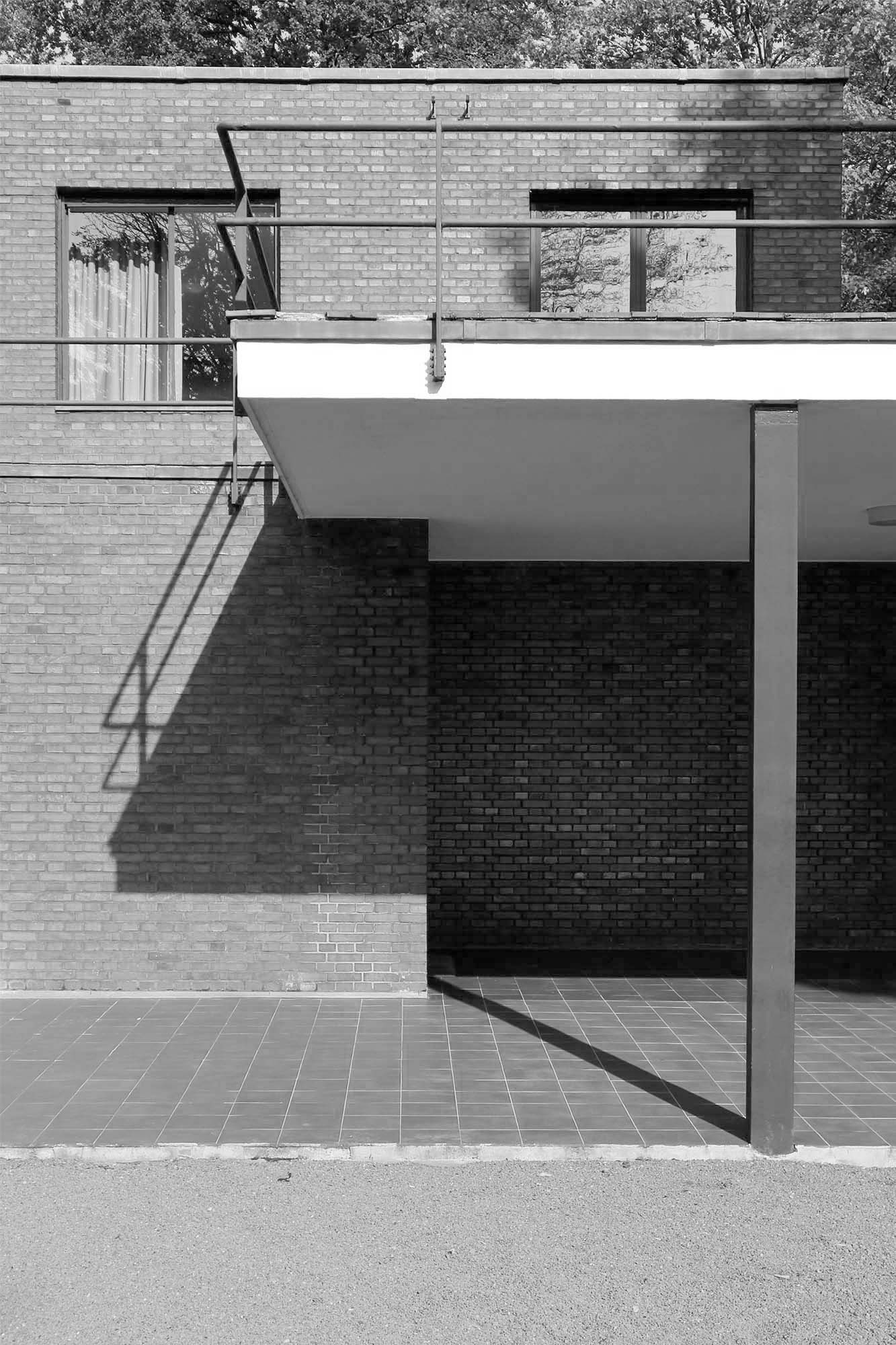
Haus Esters
... for temporary exhibitions. Both houses remain closed between exhibitions.
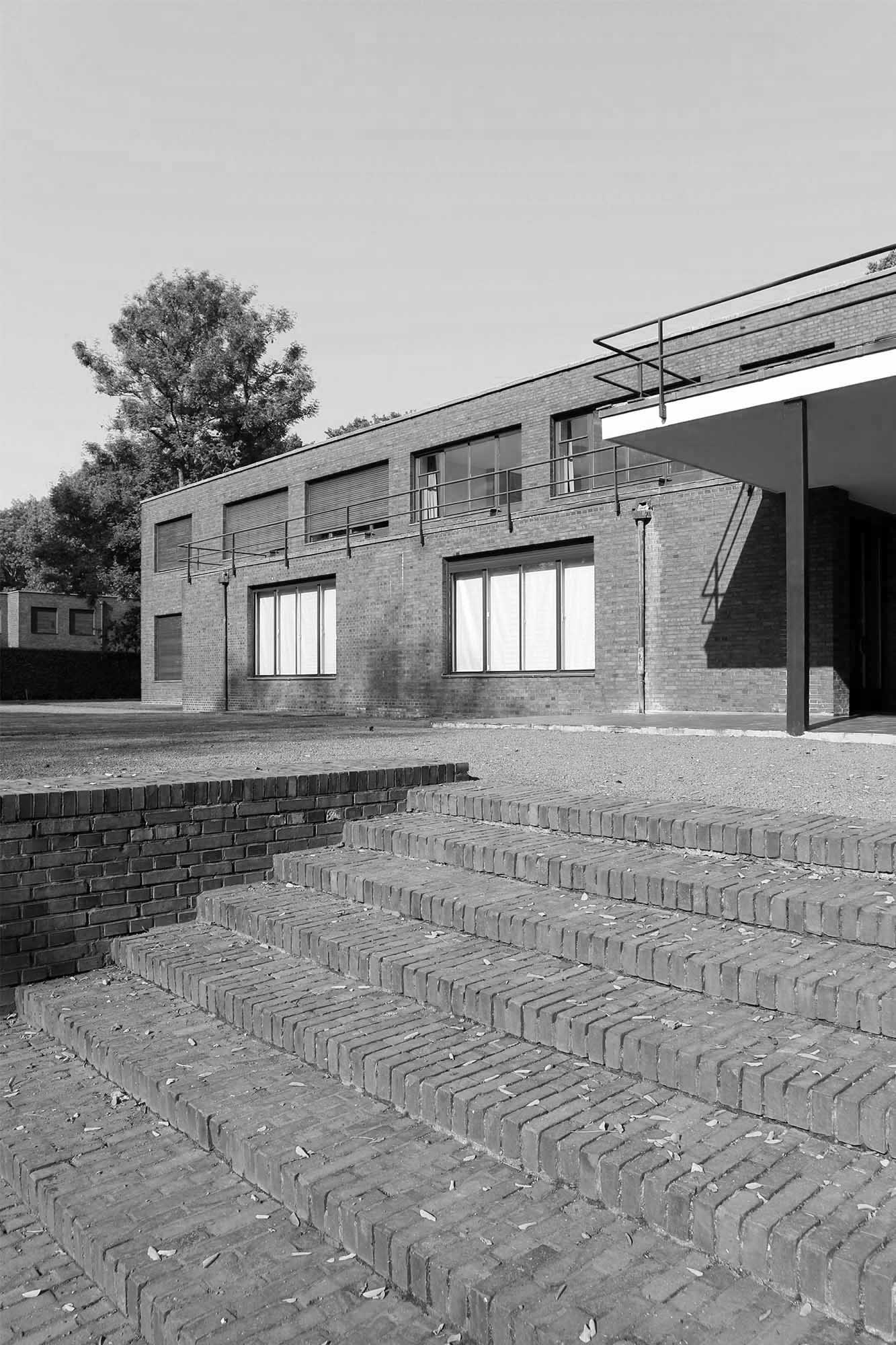
Haus Esters
Whether supporting walls, raised beds or different kinds of ground levels ...
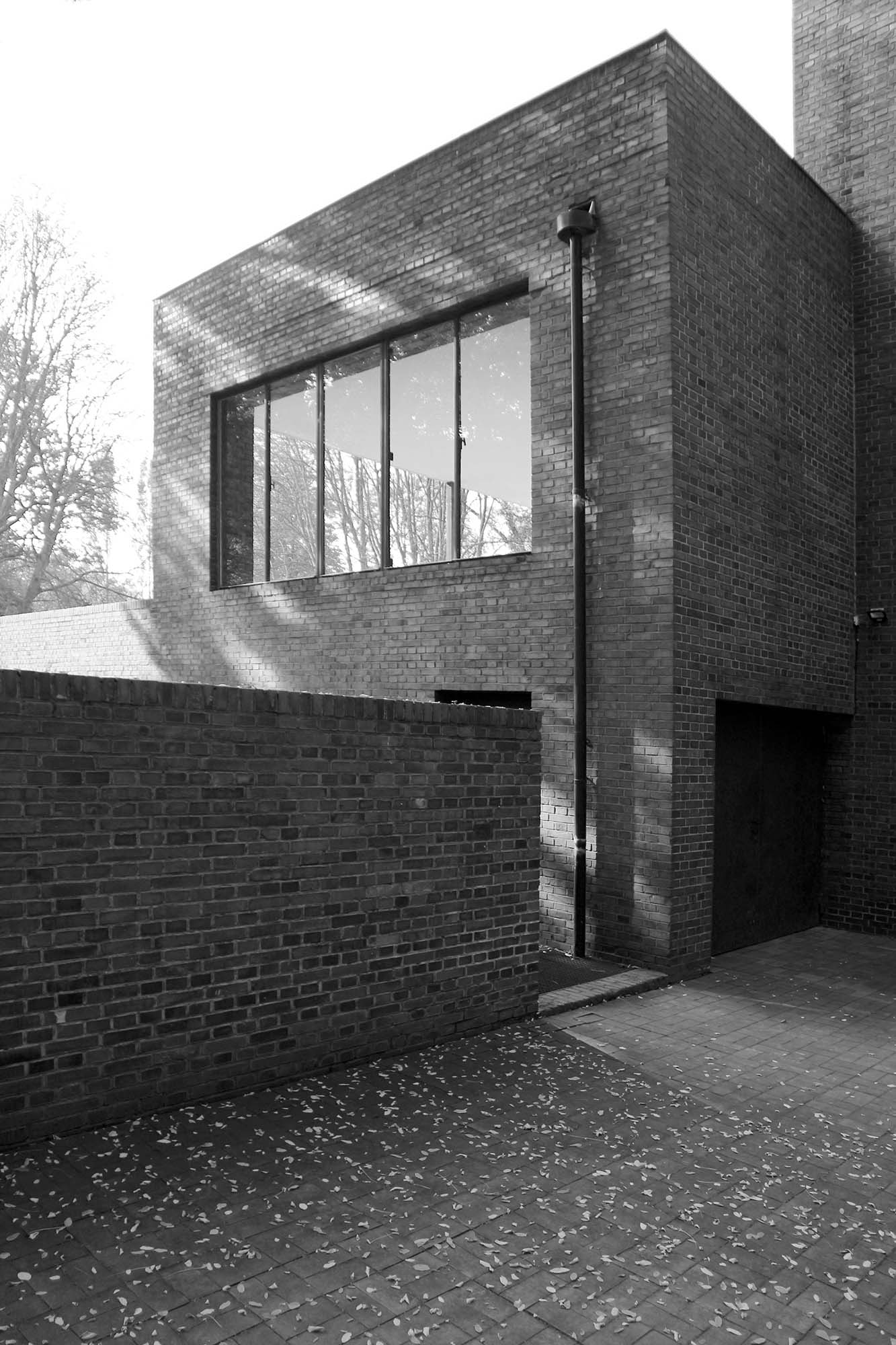
Haus Esters
... everything is clear and angular here ...
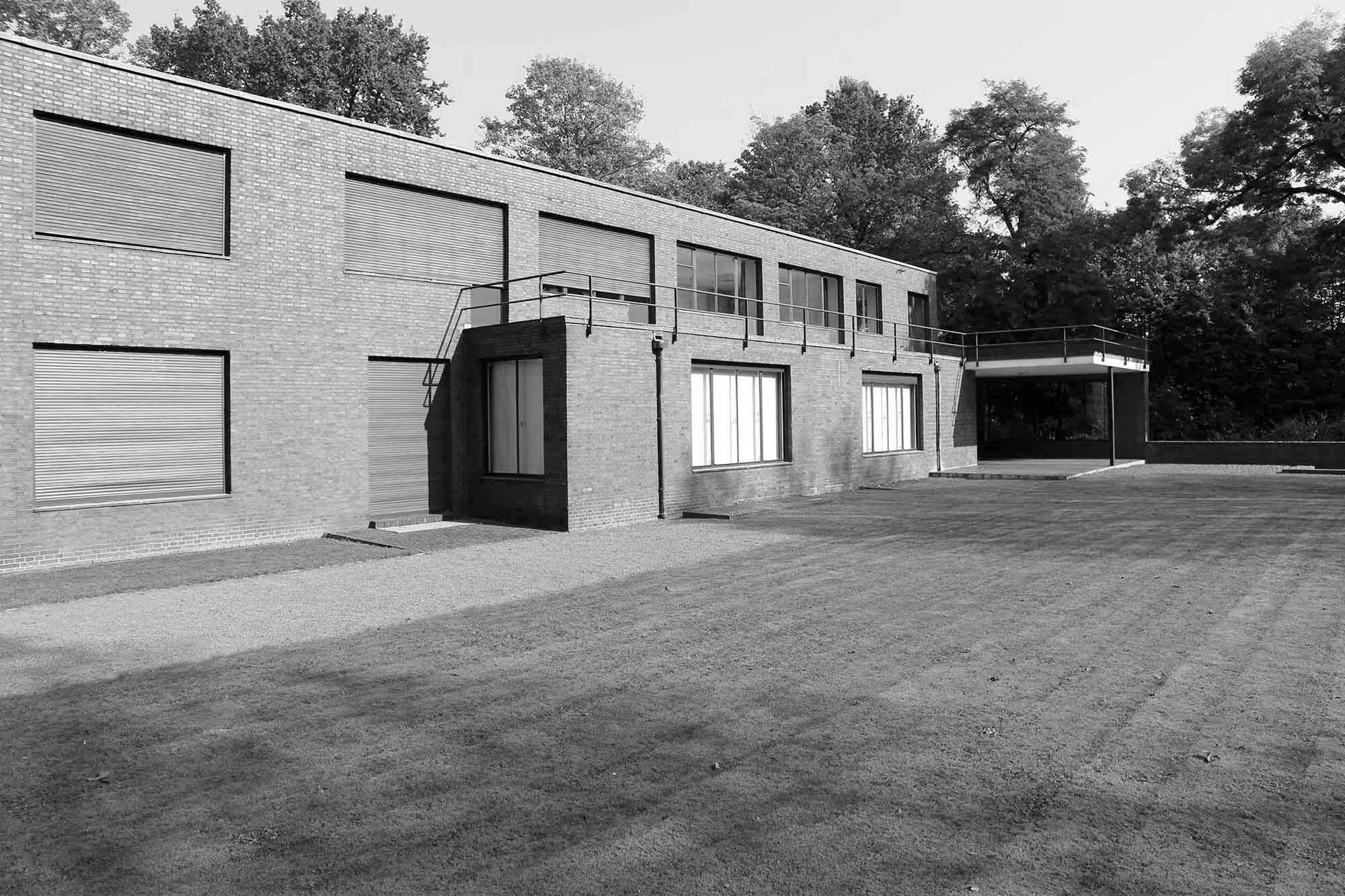
Haus Esters
... even the precise views from the windows into the garden ...
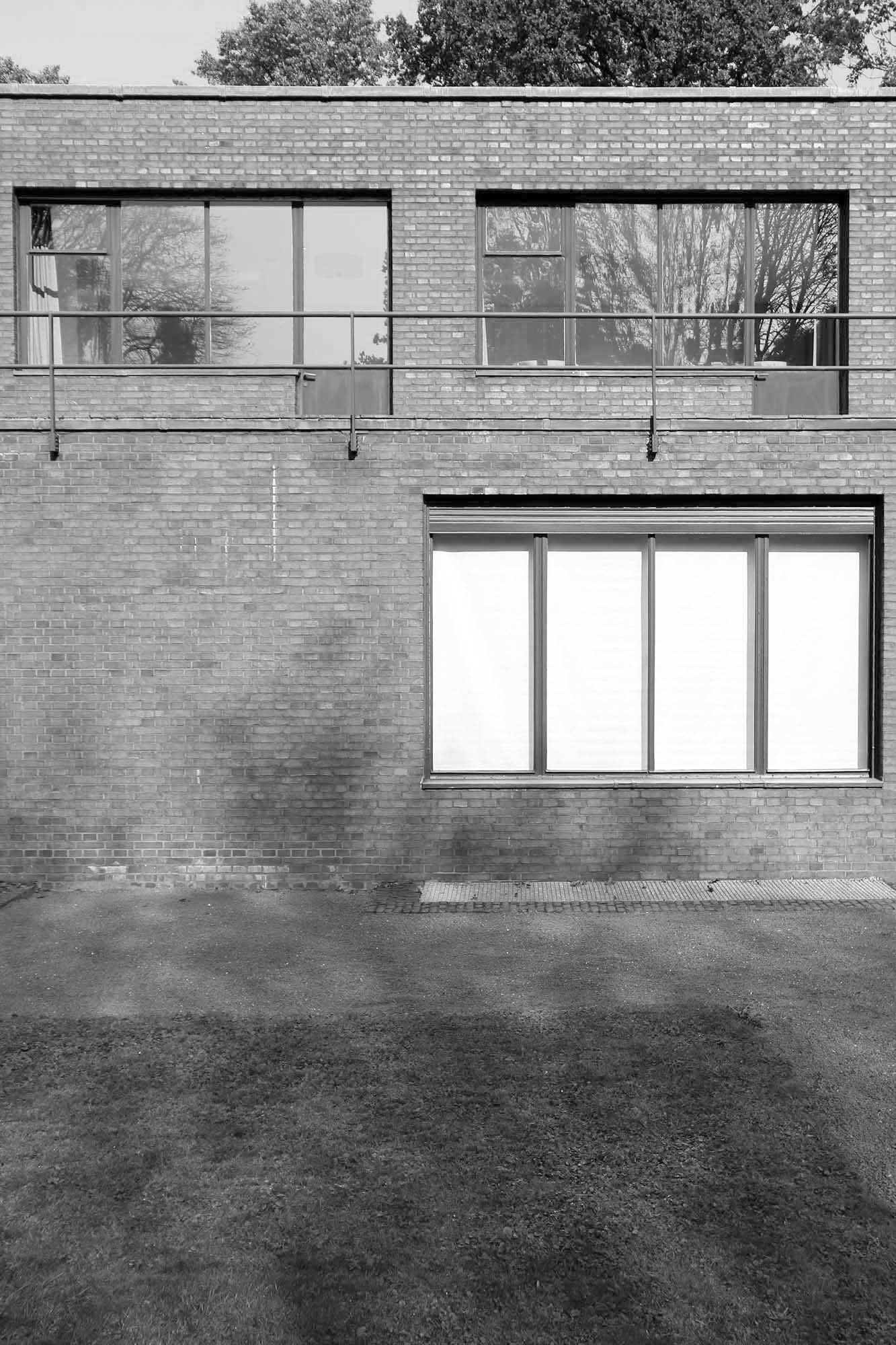
Haus Esters
... the sight lines from the terrace, the perspective onto the zoned site.
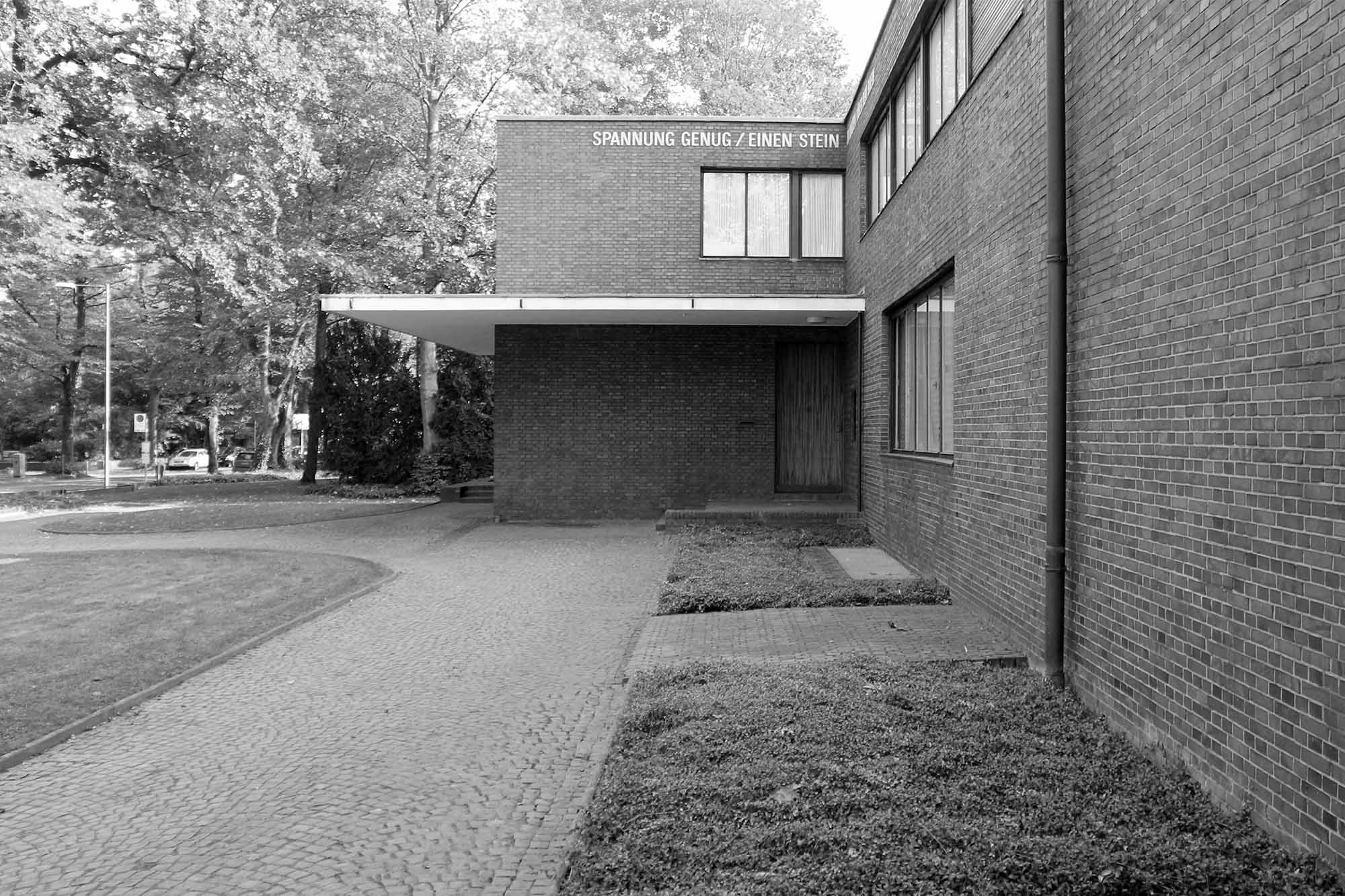
Haus Esters
Lawrence Weiner installed the text "SPANNUNG GENUG / EINEN STEIN ZU HALTEN / ÜBER DEM RHEIN" (ENOUG TENSION / TO KEEP A STONE / ABOVE THE RHINE) above the entrance in 1985.
In the interior, too, Mies designed a fluid room sequence at first. However, the clients Lange and Esters wanted closed-off rooms with doors, at least for the private areas. Mies developed the interior design together with Lilly Reich. They infused it with quality, down to the smallest details. They clad floors and window embrasures in walnut and oak, and so as not to disturb the harmonious development of space, the furniture is wholly or partially integrated into the walls. In Haus Lange, a flexible wooden wall enables a division between the dining area and the hall. Most details have happily survived in their original form. Here everything still sits, from light switches to cupboard knobs to ceiling lamps.

Haus Lange
In the interior, too, Mies designed a fluid room.
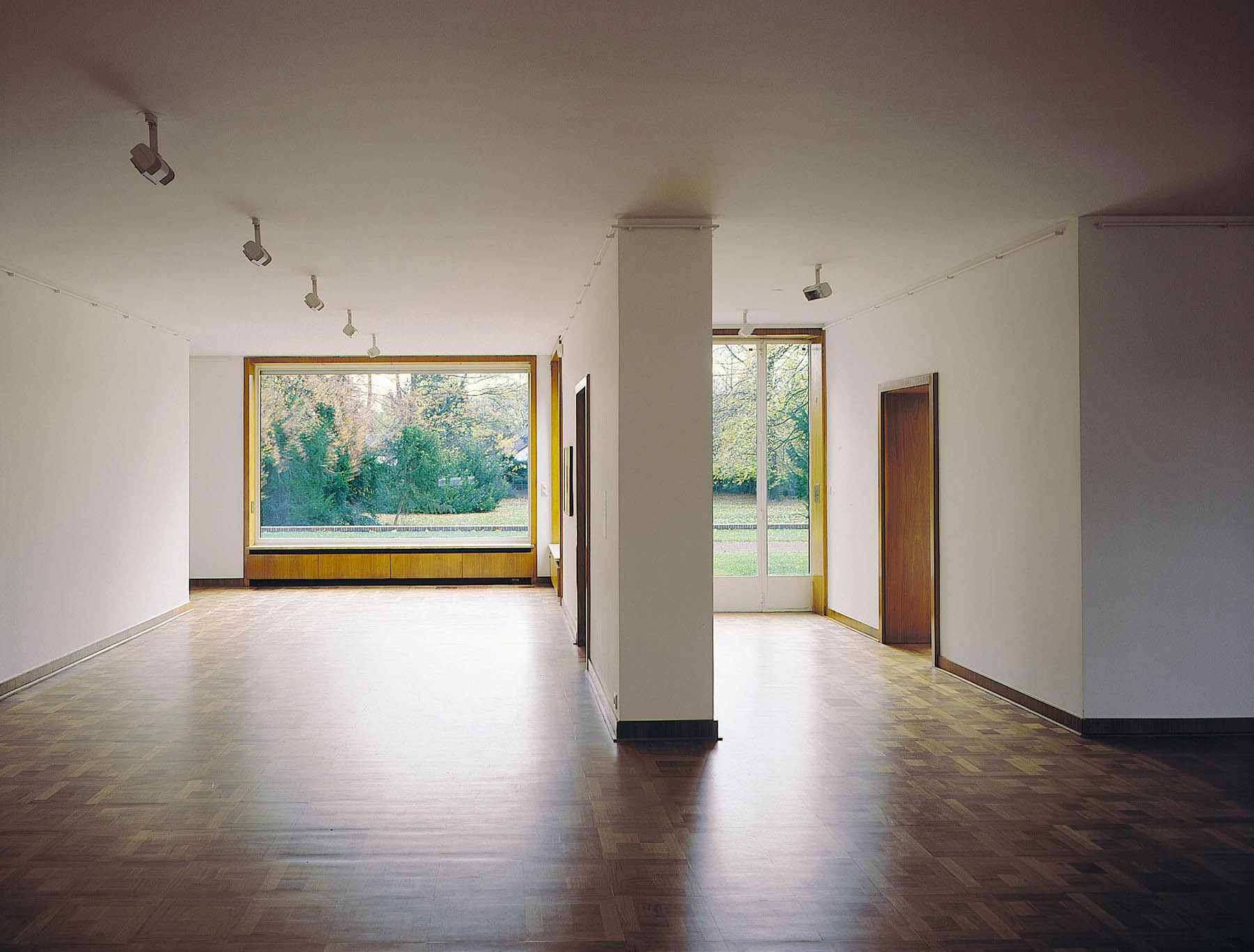
Haus Lange
Mies developed the interior design together with Lilly Reich.
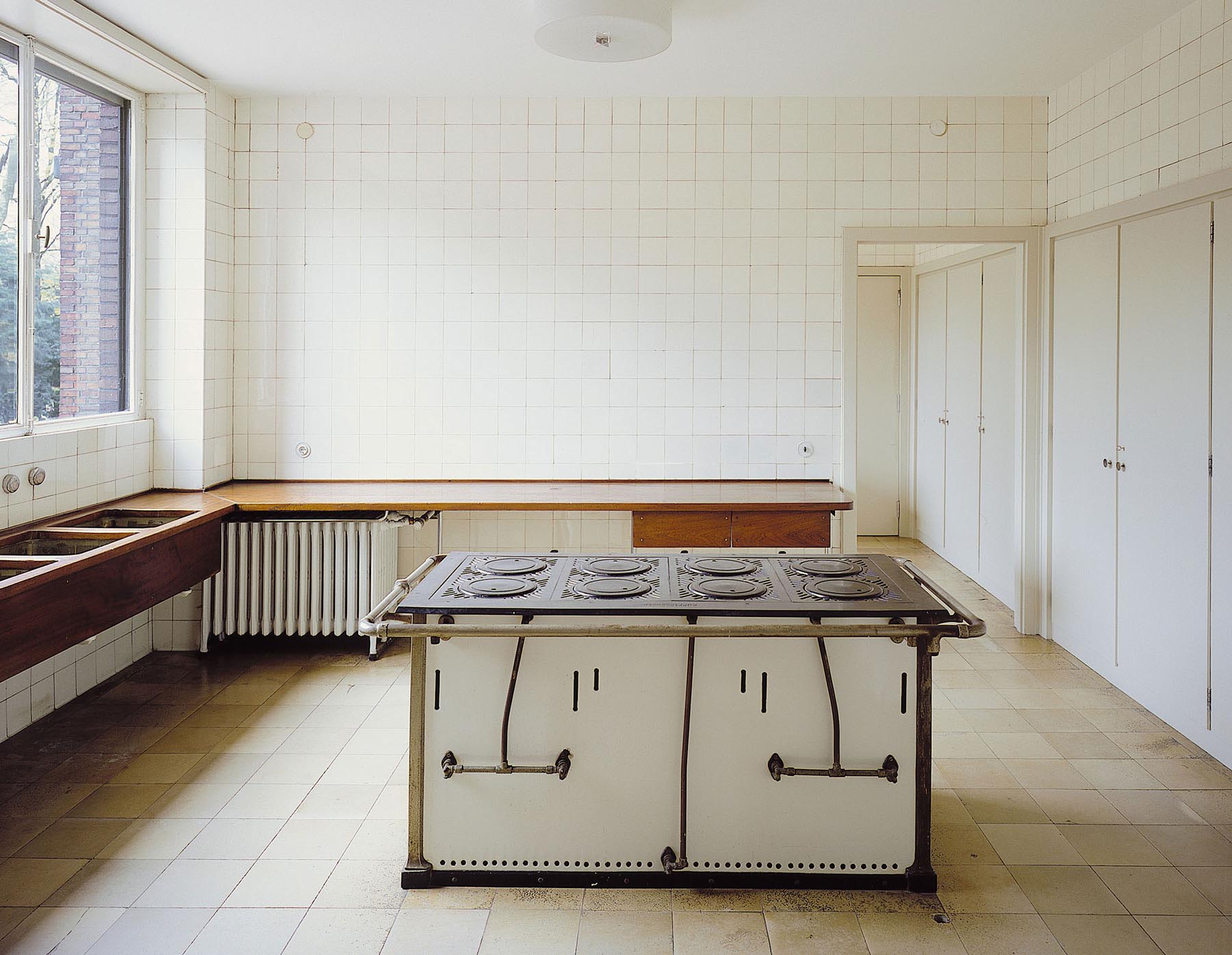
Haus Lange
They infused it with quality, down to the smallest details.
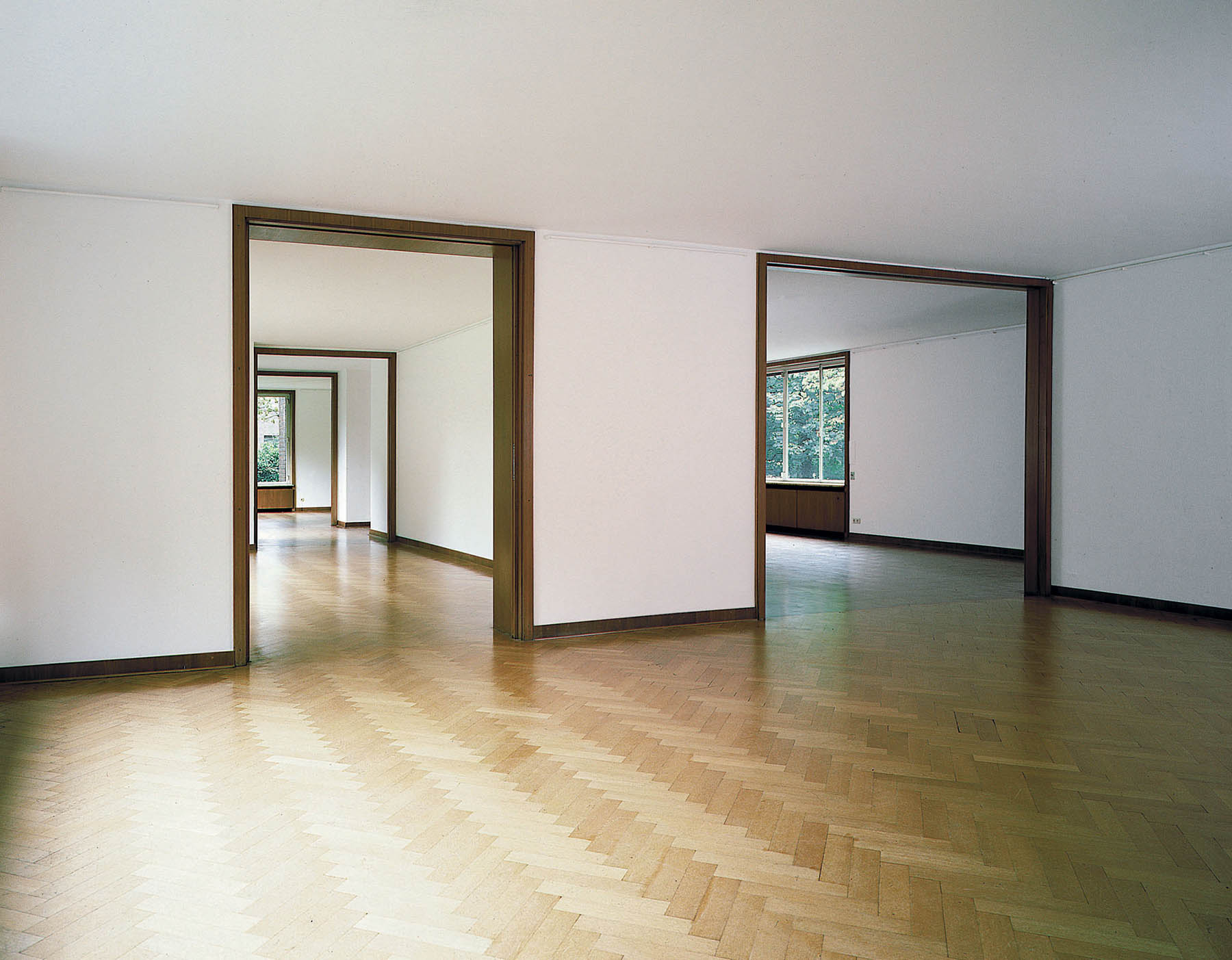
Haus Esters
Floors and window in walnut and oak
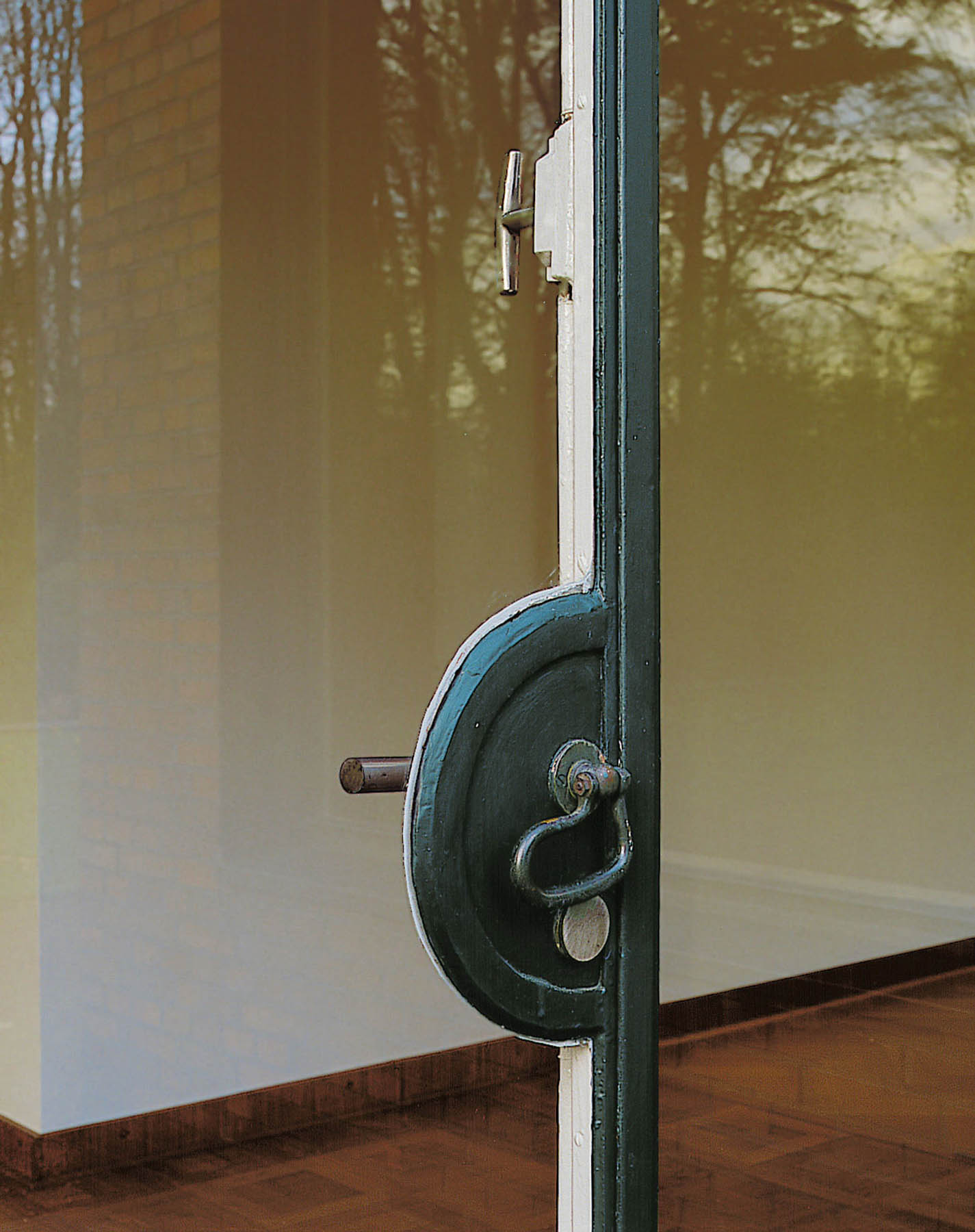
Haus Esters
Detail of the garden door
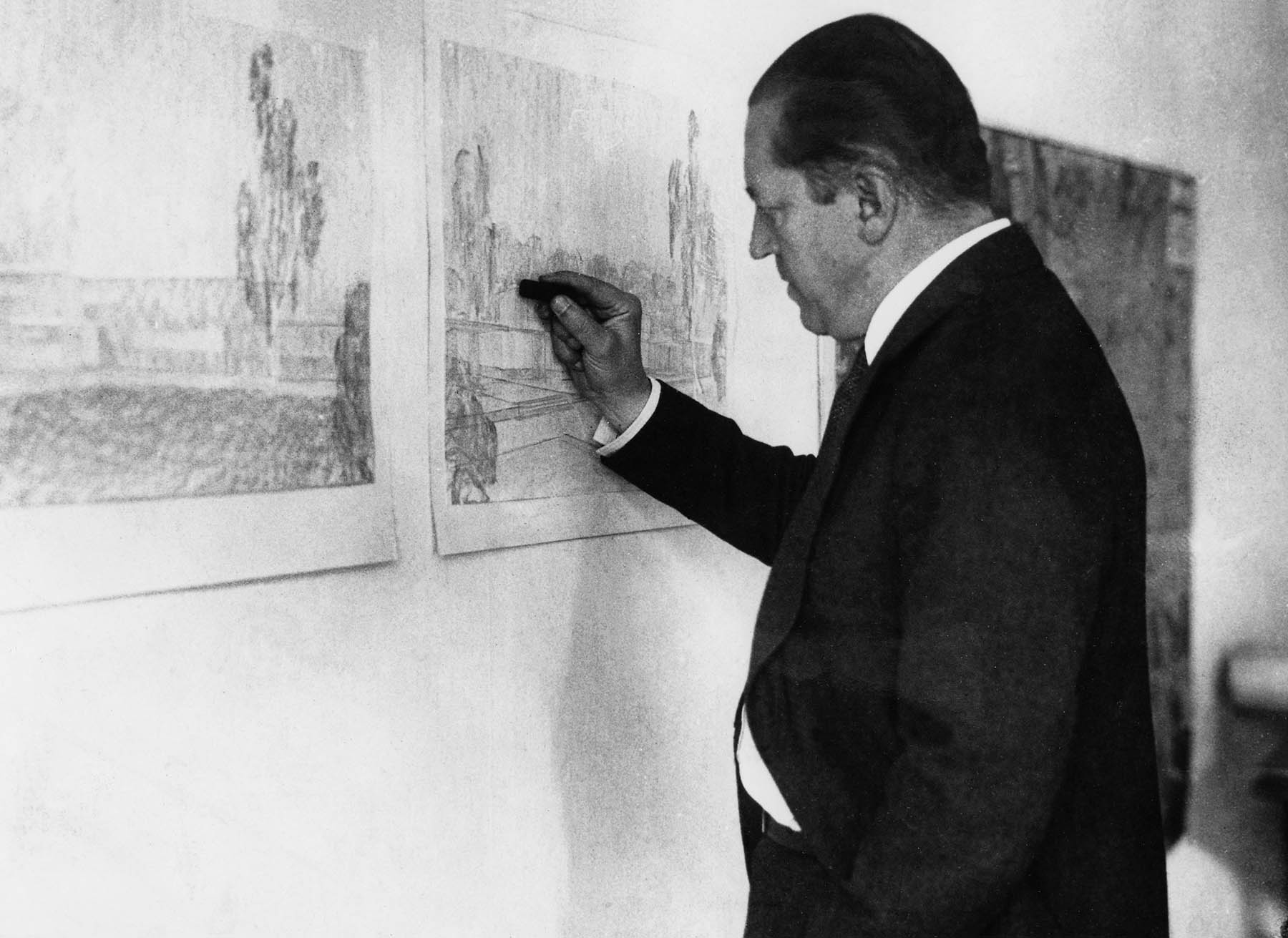
Mies van der Rohe
At work (around 1927/28)
»Create form from the essence of function, using the means of our time. That is our mission. «
Ludwig Mies van der Rohe, architect
Krefeld
Also known as Crefeld until 1929, is a city in North Rhine-Westphalia, Germany. It is located northwest of Düsseldorf, its centre lying just a few kilometres to the west of the river Rhine; the borough of Uerdingen is situated directly on the Rhine. Krefeld is accessed by the autobahns A57 (Cologne–Nijmegen) and the A44 (Aachen–Düsseldorf–Dortmund–Kassel).Krefeld is also called the "Velvet and Silk City".Krefeld's residents speak Hochdeutsch, the standard German taught to all people in Germany. However, the native dialect is a Low German variety, sometimes locally called Krefelder Plattdeutsch, Krieewelsch Platt, Plattdeutsch, or sometimes simply Platt. The Uerdingen line isogloss, separating general dialectical areas in Germany and neighbouring Germanic-speaking countries, runs through and is named after Krefeld's Uerdingen district, originally an independent municipality. (Wikipedia).
Haus Lange and Haus Esters
Address: Wilhelmshofallee 91-97, 47800 Krefeld, Germany
Ludwig Mies van der Rohe
Born Maria Ludwig Michael Mies (March 27, 1886 – August 17, 1969). He was a German-American architect. He is commonly referred to and was addressed as Mies, his surname. Along with Le Corbusier, Walter Gropius and Frank Lloyd Wright, he is widely regarded as one of the pioneers of modernist architecture. An innovative architect in 1920's and 1930's Germany, Mies was the last director of the Bauhaus, a seminal school in modern architecture. After Nazism's rise to power, and with its strong opposition to modernism, which lead also the closing of the Bauhaus itself, Mies emigrated to the United States. He accepted the position to head the architectural school at the Illinois Institute of Technology in Chicago. Mies sought to establish a new architectural style that could represent modern times just as Classical and Gothic did for their own eras. He created an influential twentieth-century architectural style, stated with extreme clarity and simplicity. His mature buildings made use of modern materials such as industrial steel and plate glass to define interior spaces. He strove toward an architecture with a minimal framework of structural order balanced against the implied freedom of unobstructed free-flowing open space. He called his buildings "skin and bones" architecture. He sought an objective approach that would guide the creative process of architectural design, but he was always concerned with expressing the spirit of the modern era. He is often associated with his quotation of the aphorisms, "less is more" and "God is in the details". (with Wikipedia material)
Lilly Reich
Born 16. June 1885 in Berlin; died 14. December 1947 in Berlin. She was a German modernist designer and a close collaborator with Ludwig Mies Van der Rohe for more than ten years. She started her career as a designer of textiles and women's clothes. This experience was to be formative for her - giving her a particular interest in contrasting textures and materials, as well as specific skills with regard to the use of textiles in furniture. She worked in the studio of Josef Hoffmann in Vienna from 1908. Hoffmann was a celebrated modernist designer, responsible for designs such as the Kubus chair (1918), Cabinet (circa 1915), Koller (1911), and Broncia (1912) chairs. In 1912 she joined the Deutscher Werkbund, a government sponsored organization dedicated to the promotion of German-made products and designs. This was to be a lasting passion and recurring theme in her career. (with Wikipedia material).
Neues Bauen
Also 'Neue Sachlichkeit', meaning New Objectivity or New Sobriety, avant-garde architecture in Germany in the 1920s and 1930s, associated with new architecture, especially of the International Modernist style. The style remodelled many German cities in this period. The architects of the New Objectivity were eager to build as much cost-effective housing as possible, partly to address Germany's post-war housing crisis, and partly to fulfil the promise of Article 155 of the 1919 Weimar Constitution, which provided for "a healthy dwelling" for all Germans. This phrase drove the technical definition of Existenzminimum (subsistence dwelling) in terms of minimally-acceptable floor space, density, fresh air, access to green space, access to transit, and other such resident issues. Architects used mainly glass, steel, concrete and brick for their designs. Main representatives were Le Corbusier, Adolf Loos, Walter Gropius, Otto Haesler, Hugo Häring, Erich Mendelsohn, Ludwig Mies van der Rohe, Gerrit Rietveld, Hans Scharoun, Bruno Taut, Max Taut, Ernst May, Mart Stam, Alvar Aalto, Pier Luigi Nervi und Jörn Utzon. Fritz Schupp and Martin Kremmer designed Zollverein in the style of Neues Bauen. They are the only German architects whose buildings had two world heritage site listings in a row: the Rammelsberg Mine in Goslar – a world heritage site since 1992 – and the Zollverein Coal Mine, a world heritage site since 2001.